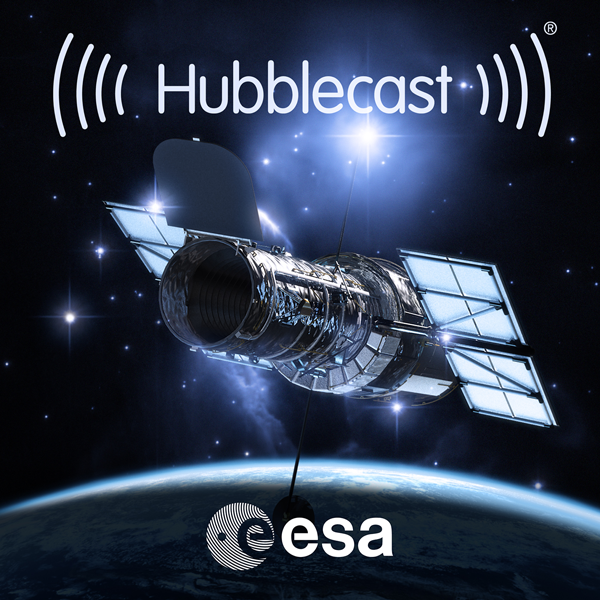Episodes
This new Hubblecast episode takes a detailed look into the refined Pointing Control System that allows Hubble to keep its gaze into the Universe firm and steady.
Published 12/19/18
This new Hubblecast episode takes a detailed look into the refined Pointing Control System that allows Hubble to keep its gaze into the Universe firm and steady.
Published 12/19/18
Published 10/08/18
Published 10/08/18
Mars and Saturn are among the most popular planets. This new episode of the Hubblecast presents the images Hubble took of these planets in summer 2018.
Published 07/26/18
Mars and Saturn are among the most popular planets. This new episode of the Hubblecast presents the images Hubble took of these planets in summer 2018.
Published 07/26/18
Astronomers have found that ‘Oumuamua, the first interstellar object discovered in the Solar System, is moving away from the Sun faster than expected. Using data from the NASA/ESA Hubble Space Telescope, in cooperation with ground-based telescopes, a team of researchers concluded that ‘Oumuamua is most likely outgassing — suggesting that this enigmatic interstellar nomad is a peculiar comet rather than an asteroid.
Published 06/27/18
Astronomers have found that ‘Oumuamua, the first interstellar object discovered in the Solar System, is moving away from the Sun faster than expected. Using data from the NASA/ESA Hubble Space Telescope, in cooperation with ground-based telescopes, a team of researchers concluded that ‘Oumuamua is most likely outgassing — suggesting that this enigmatic interstellar nomad is a peculiar comet rather than an asteroid.
Published 06/27/18
An international team of astronomers using Hubble has made the most precise test of general relativity yet outside our Milky Way.
Published 06/21/18
An international team of astronomers using Hubble has made the most precise test of general relativity yet outside our Milky Way.
Published 06/21/18
On 24 April 1990, Hubble was launched into space. To celebrate its 28th year in orbit, some of Hubble’s precious observation time was used to observe the colourful Lagoon Nebula. One of only two star-forming nebulae visible to the unaided eye, this spectacular stellar nursery is not quite the tranquil landscape its name suggests.
Published 04/19/18
On 24 April 1990, Hubble was launched into space. To celebrate its 28th year in orbit, some of Hubble’s precious observation time was used to observe the colourful Lagoon Nebula. One of only two star-forming nebulae visible to the unaided eye, this spectacular stellar nursery is not quite the tranquil landscape its name suggests.
Published 04/19/18
Astronomers have used Hubble to make an incredible discovery — they have observed the most distant star ever seen. The bright blue star existed only 4.4 billion years after the Big Bang. This incredible distant star allows astronomers to learn more about the formation and evolution of stars in the early Universe.
Published 04/02/18
Astronomers have used Hubble to make an incredible discovery — they have observed the most distant star ever seen. The bright blue star existed only 4.4 billion years after the Big Bang. This incredible distant star allows astronomers to learn more about the formation and evolution of stars in the early Universe.
Published 04/02/18
Our eyes detect only visible light, but on board Hubble are a variety of instruments that together detect many different wavelengths of light. This means that Hubble is able to observe galaxies over a wide range of wavelengths to reveal features that would otherwise remain invisible to our eyes.
Published 02/14/18
Our eyes detect only visible light, but on board Hubble are a variety of instruments that together detect many different wavelengths of light. This means that Hubble is able to observe galaxies over a wide range of wavelengths to reveal features that would otherwise remain invisible to our eyes.
Published 02/14/18
This visualisation takes the viewer on a breathtaking flight through the Orion Nebula, a nearby star-forming region. The video has been produced using scientific imagery and data from the NASA/ESA Hubble Space Telescope.
Published 01/15/18
This visualisation takes the viewer on a breathtaking flight through the Orion Nebula, a nearby star-forming region. The video has been produced using scientific imagery and data from the NASA/ESA Hubble Space Telescope.
Published 01/15/18
Published 12/21/17
Published 12/21/17
Hubble is best known for its stunning images and amazing discoveries.
But sometimes the discoveries do not come hand-in-hand with a breathtaking view of the Universe. Raise the curtains for the artists creating impressions of the cosmos! In this Hubblecast we learn how artist’s impressions are made and how realistic they are.
Published 12/19/17
Hubble is best known for its stunning images and amazing discoveries.
But sometimes the discoveries do not come hand-in-hand with a breathtaking view of the Universe. Raise the curtains for the artists creating impressions of the cosmos! In this Hubblecast we learn how artist’s impressions are made and how realistic they are.
Published 12/19/17
Astronomers using the NASA/ESA Hubble Space Telescope have observed a visible counterpart to gravitational waves for the first time: a kilonova from merging neutron stars.
Published 10/16/17
Astronomers using the NASA/ESA Hubble Space Telescope have observed a visible counterpart to gravitational waves for the first time: a kilonova from merging neutron stars.
Published 10/16/17
The atmosphere of an exoplanet can reveal a wealth of information, such as the planet’s temperature, its air pressure, and whether it is suitable for life. However, studying exoplanet atmospheres is one of the most challenging tasks in modern astronomy — and a challenge for Hubble too. This new episode of the Hubblecast describes how exoplanet atmospheres are analysed and what makes it such a challenge.
Published 10/11/17


